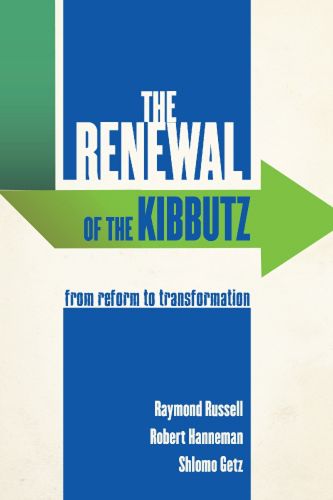Readings Newsletter
Become a Readings Member to make your shopping experience even easier.
Sign in or sign up for free!
You’re not far away from qualifying for FREE standard shipping within Australia
You’ve qualified for FREE standard shipping within Australia
The cart is loading…






We think of the kibbutz as a place for communal living and working. Members work, reside, and eat together, and share income from each according to ability, to each according to need . But in the late 1980s the kibbutzim decided that they needed to change. Reforms - moderate at first - were put in place. Members could work outside of the organization, but wages went to the collective. Apartments could be expanded, but housing remained kibbutz-owned. In 1995, change accelerated. Kibbutzim began to pay salaries based on the market value of a member’s work. As a result of such changes, the renewed kibbutz emerged. By 2010, 75 percent of Israel’s 248 nonreligious kibbutzim fit into this new category.
The Renewal of the Kibbutz explores the waves of reforms since 1990. Looking through the lens of organizational theories that predict how open or closed a group will be to change, the authors find that less successful kibbutzim were most receptive to reform, and reforms then spread through imitation from the economically weaker kibbutzim to the strong.
$9.00 standard shipping within Australia
FREE standard shipping within Australia for orders over $100.00
Express & International shipping calculated at checkout
We think of the kibbutz as a place for communal living and working. Members work, reside, and eat together, and share income from each according to ability, to each according to need . But in the late 1980s the kibbutzim decided that they needed to change. Reforms - moderate at first - were put in place. Members could work outside of the organization, but wages went to the collective. Apartments could be expanded, but housing remained kibbutz-owned. In 1995, change accelerated. Kibbutzim began to pay salaries based on the market value of a member’s work. As a result of such changes, the renewed kibbutz emerged. By 2010, 75 percent of Israel’s 248 nonreligious kibbutzim fit into this new category.
The Renewal of the Kibbutz explores the waves of reforms since 1990. Looking through the lens of organizational theories that predict how open or closed a group will be to change, the authors find that less successful kibbutzim were most receptive to reform, and reforms then spread through imitation from the economically weaker kibbutzim to the strong.